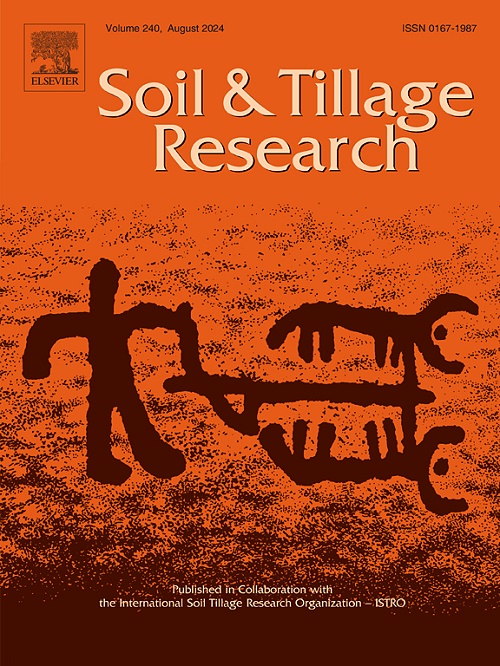Responses of soil reactive nitrogen losses and nitrogen pools to straw mulching
IF 6.1
1区 农林科学
Q1 SOIL SCIENCE
引用次数: 0
Abstract
Straw mulching (SM) is a frequently adopted practice in conservation agriculture that prevents soil erosion and improves soil multifunctionality and crop yield. Data synthesis studies have focused on soil greenhouse gas emissions, soil carbon storage, and crop productivity after SM application; however, soil N cycling and losses are poorly understood. This study conducted a comprehensive analysis using a meta-analytical method to interpret the effects of SM on soil gaseous (NH3 and N2O emission) and hydrological (leaching and surface runoff) N losses and the content of different N forms and N cycling functional genes. The results showed that soil N2O emissions increased and that N leaching and surface runoff were significantly mitigated under SM compared with those of unmulched soils. Soil nitrate, dissolved organic N, and microbial biomass N increased significantly after SM adoption, as did the denitrification genes (nirS, nirK, and nosZ). The metaforest model suggested that field management contributed substantially to NH3 volatilisation and N runoff during the SM and that climatic conditions determined N2O emissions. Specifically, a long-term SM regime (duration>5 years) or SM combined with a low N application rate or straw application rate can reduce N runoff while avoiding the stimulation of NH3 volatilisation and N2O emissions. This study provided new insights into the effects of SM on soil N retention and loss. Suitable field practices should be adopted under SM treatment to minimise N loss and avoid N pollutant swapping.
求助全文
约1分钟内获得全文
求助全文
来源期刊

Soil & Tillage Research
农林科学-土壤科学
CiteScore
13.00
自引率
6.20%
发文量
266
审稿时长
5 months
期刊介绍:
Soil & Tillage Research examines the physical, chemical and biological changes in the soil caused by tillage and field traffic. Manuscripts will be considered on aspects of soil science, physics, technology, mechanization and applied engineering for a sustainable balance among productivity, environmental quality and profitability. The following are examples of suitable topics within the scope of the journal of Soil and Tillage Research:
The agricultural and biosystems engineering associated with tillage (including no-tillage, reduced-tillage and direct drilling), irrigation and drainage, crops and crop rotations, fertilization, rehabilitation of mine spoils and processes used to modify soils. Soil change effects on establishment and yield of crops, growth of plants and roots, structure and erosion of soil, cycling of carbon and nutrients, greenhouse gas emissions, leaching, runoff and other processes that affect environmental quality. Characterization or modeling of tillage and field traffic responses, soil, climate, or topographic effects, soil deformation processes, tillage tools, traction devices, energy requirements, economics, surface and subsurface water quality effects, tillage effects on weed, pest and disease control, and their interactions.
 求助内容:
求助内容: 应助结果提醒方式:
应助结果提醒方式:


